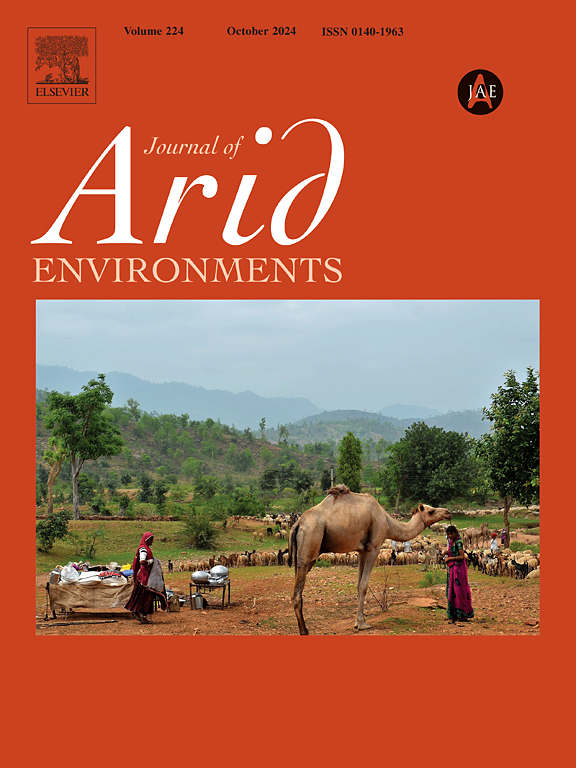Quantifying changes in savanna rangeland grass phenology and biomass due to an El Niño event
IF 2.6
3区 环境科学与生态学
Q2 ECOLOGY
引用次数: 0
Abstract
The effects of El Niño events on rangeland grass phenology and biomass are often presumed and, therefore, seldom quantified. Here, the effects on the grass start of growing season (SOS), end of growing season (EOS), length of growing season (LGS), and aboveground biomass (AGB) are quantified. The SOS, EOS, LGS, and peak phenology dates in a normal and an El Niño season were identified using trends in 16-day Enhanced Vegetation Index (EVI) values derived from the MODIS (MODerate Resolution Imaging Spectrometer) MOD13Q1 product. During the El Niño rainy season, grass AGB samples were collected from dispersed sampling sites soon after the peak phenology stage. Their Soil Adjusted Vegetation Index (SAVI) values, computed from 10 m resolution Sentinel-2 MSI images, were correlated with the AGB. A statistically significant (p < 0.05) linear regression model for predicting grass AGB from SAVI values was developed. Using the model, the non-El Niño season's peak phenology AGB values at the respective sites were predicted from Sentinel-2 MSI image SAVI values. The El Niño event caused erratic seasonal rainfall, a two-month delay to the SOS, a one-month late EOS, and a one month shorter LGS. On average, grass AGB was 59% lower due to the event.
El Niño事件对稀树草原牧草物候和生物量的量化影响
El Niño事件对草地草物候和生物量的影响通常是假定的,因此很少量化。在此基础上,定量分析了土壤对牧草生长季开始(SOS)、生长季结束(EOS)、生长季长度(LGS)和地上生物量(AGB)的影响。利用MODIS(中分辨率成像光谱仪)MOD13Q1产品的16天增强型植被指数(EVI)值趋势,确定了正常和厄尔尼诺Niño季节的SOS、EOS、LGS和物候峰值日期。在El Niño雨季,在物候高峰期后不久,从分散的采样点采集草AGB样本。他们的土壤调整植被指数(SAVI)值由10 m分辨率的Sentinel-2 MSI图像计算,与AGB相关。p <;0.05)建立了用SAVI值预测牧草AGB的线性回归模型。利用该模型,利用Sentinel-2 MSI图像SAVI值预测了各站点非el Niño季节的峰值物候AGB值。El Niño事件导致季节性降雨不稳定,SOS延迟两个月,EOS延迟一个月,LGS缩短一个月。平均而言,由于该事件,草的AGB降低了59%。
本文章由计算机程序翻译,如有差异,请以英文原文为准。
求助全文
约1分钟内获得全文
求助全文
来源期刊

Journal of Arid Environments
环境科学-环境科学
CiteScore
5.70
自引率
3.70%
发文量
144
审稿时长
55 days
期刊介绍:
The Journal of Arid Environments is an international journal publishing original scientific and technical research articles on physical, biological and cultural aspects of arid, semi-arid, and desert environments. As a forum of multi-disciplinary and interdisciplinary dialogue it addresses research on all aspects of arid environments and their past, present and future use.
 求助内容:
求助内容: 应助结果提醒方式:
应助结果提醒方式:


